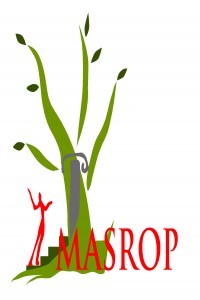Çorakyerler Lokalitesi Hystricidae Buluntuları
Yıllar geçtikçe artan tür sayısı ile Çorakyerler, Anadolu Geç Miyosen’i için bir referans lokalite konumuna gelmiştir. Son derece zengin bir faunaya sahip olan bu lokalitede son yıllarda yapılan kazı çalışmalarında iki adet Hystricidae (oklu kirpigiller) ailesine mensup materyal açığa çıkarılmıştır. 2015’e dek Çorakyerler’deki varlığı bilinmeyen bu üyeler, lokaliteyi daha zengin kılmış ve paleoekolojik yorumlara destek sağlamıştır. Yapılan morfolojik çalışmalar ve plot diyagram analizleri sonucunda Çorakyerler oklu kirpi materyallerinin şu an için Hystrix sp. adı altında toplanması uygun görülmüştür. Anadolu’daki sınırlı sayıda lokalitede tanımlanmış olan bu genus için, Çorakyerler örneklerinin sonuçları oldukça kritik görünmektedir. Bu örnekler genusun Turoliyen temsilcilerinin sistematik tanımlamasının yapılabilmesi açısından son derece önemli konumdalardır.
Anahtar Kelimeler:
Çorakyerler, Geç Miyosen, Turoliyen, Hystrix
___
- Bonis vd. 1992: de Bonis, L.- Bouvrain, G.- Geraads, D.- Koufos, G., A skull of Hystrix primigenia from the late Miocene of Macedonia (Greece). Neues Jahrbuch für Geologie und Paläontologie, Monatshefte 2, 1992, 75–87.
- Gorbunov 1985: Gorbunov, A.V. "Features of the ecology of porcupines in the deserts of eastern Prikaspia". Soviet Journal of Ecology, 1985, 248–253.
- Prieto 2013: Prieto, J. Hystrix record from Taskinpaşa (Upper Miocene, Central Anatolia). Zitteliana A53, 2013, 179-180.
- Sevim Erol vd 2017: Sevim Erol, A.- Yavuz A.Y.- Tarhan E.- Mayda S.- van den Hoek Ostende L.W. “Morphological and Odontometric Analysis Of Corakyerler Hominoid” 15th Congress of the RCMNS 2017 September p.61. Atina-Greece.
- Sickenberg 1975: Sickenberg, O. Die Gliederung des höheren Jungtertiärs und Altquartärs in der Türkei nach Vertebraten und ihre Bedeutung für die internationale Neogen-Gliederung. Geologisches Jahrbuch (Regionale Geologie Ausland), Hannover, Reihe B, Heft 15, 1975, 167.
- Şen 2001: Şen, Ş., Rodents and insectivores from the upper Miocene of Molayan, Afghanistan, Palaeontology, 2001, 44: 913-932.
- Şen-Purabrishemi 2010: Şen, Ş.- Purabrishemi, Z. First porcupine fossils (Mammalia, Rodentia) from the late Miocene of NW Iran, with notes on lateMiocene–Pliocen dispersal of porcupines. Paläontologische Zeitschrift, Volume84, Issue2, 2010, pp 239–248.
- Van Weers 1990: Weers, D.J. van., Dimensions and occlusal pattern in molars of Hystrix brachyura Linnaeus, 1758 (Mammalia, Rodentia) in a system of wear categories. Bijdragen tot de Dierkunde 60, 1990, 121–134.
- Van Weers-Montoya 1996: Weers, D. J. van, - Montoya P., Taxonomy and stratigraphic record of the oldest European porcupine Hystrix parvae (Kretzoi,1951). Proceedings of the Koninklijke Nederlandse Akademie van Wetenschappen, 1996, 99:131–141.
- Van Weers-Rook 2003: Van Weers, D.J. van, - Rook, L. Turolian and Ruscinian porcupines (genus Hystrix, Rodentia) from Europe ,Asia and North Africa. Palaontologische Zeitschrift 77: 2003, 95–113.
- Yavuz vd. 2017: Yavuz, A.Y., Mayda, S.- Sevim Erol, A.- Kaya, T.T.- van den Hoek Ostende L.W.- Peláez-Campomanes, P.- Alçiçek, M.C. “First record of Hystrix (Mammalia, Rodentia) from the Çorakyerler (Çankırı – Central Anatolia) fauna (Early Turolian, MN11)” 15th Annual Meeting of the Eoropean Association of Vertebrate Palaeontologist, Munich 1-5 August 2017, Germany.
- Yayın Aralığı: Yılda 2 Sayı
- Başlangıç: 2007
- Yayıncı: Uğur ALANYURT
Sayıdaki Diğer Makaleler
Çorakyerler Lokalitesi Hystricidae Buluntuları
Erhan TARHAN, Alper Yener YAVUZ, Serdar MAYDA, Ayla SEVİM EROL
Neandertallerde Bitki Tüketimi
OLAY YERİNDEKİ İNSAN İSKELETLERİNİN SİSTEMATİK ANALİZİ
Niyazi Umut AKINCIOĞLU, Ayla SEVİM EROL, Yeşim ALAKOÇ, Hamit HANCI
Ahmet İhsan AYTEK, Hatice Asena KIZILARSLANOĞLU
Ilısu Baraj Gölü Alanı Paleolitik Çağ Çekirdekleri
Zürih Üniversitesi Paleontoloji Müzesi’nde Bulunan Çorakyerler Suidae Materyallerinin Revizyonu
Erhan TARHAN, Serdar MAYDA, Alper Yener YAVUZ, Ayla SEVİM EROL
Patara İnsanlarında Bir Diş Varyasyonu: Supernumerary Premolar Diş ve Antropolojik Önemi
